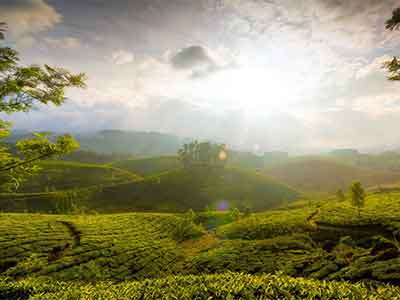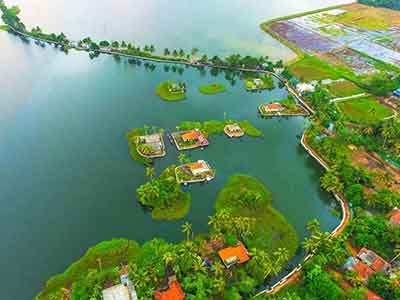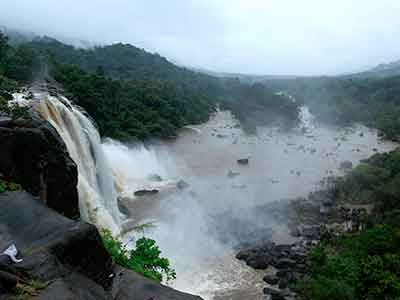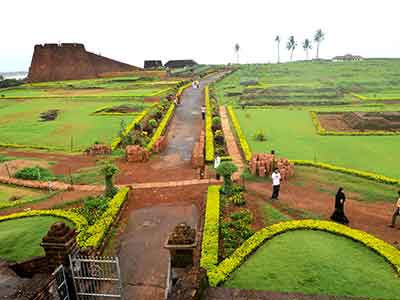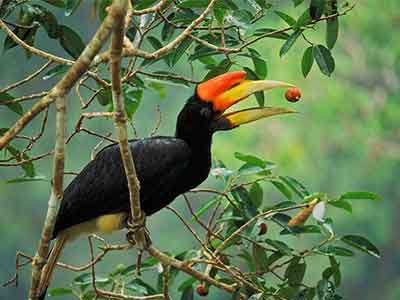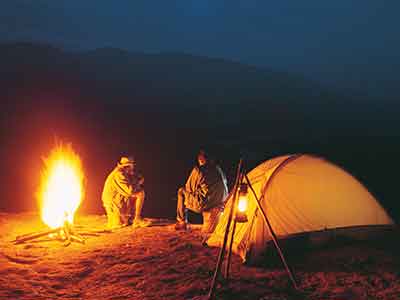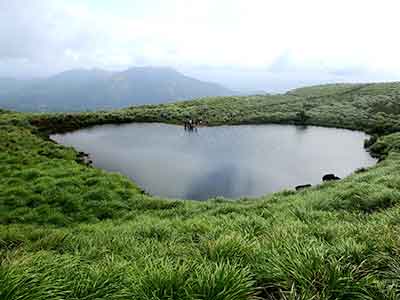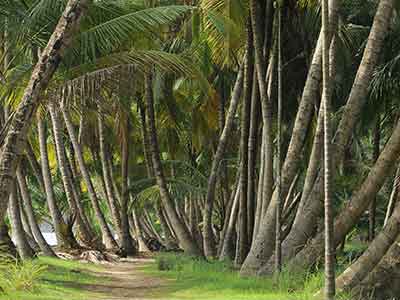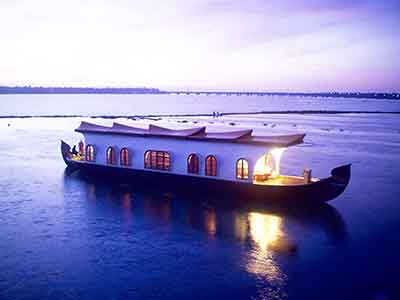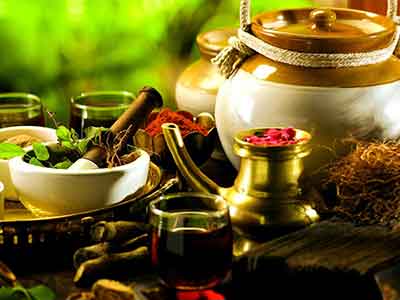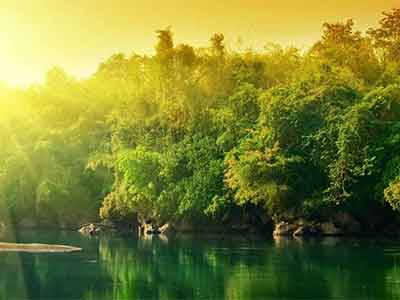Email: sales@travioholidays.in
Help: +91 98950 53303

Variously known as Chennai or Madras, the city is an energetic and restless one, peopled predominantly by proud and ancient Tamil Dravidians and defined by its high intellectual pedigree and traditional culture. With the eventual victory of the British colonialists, the Madras Presidency was established as a hub of their power in the south. After India wrested her independence from the British in 1947, Chennai continued as the capital of the new state of Tamil Nadu – the land of the Tamils.
Chennai is an eclectic city. Temples, churches and mosques abound – evidence of the steady influx of foreign traders, missionaries and conquerors over the centuries. It is the final resting place of St Thomas, one of Jesus’ twelve apostles and it is also home to the ancient clans of Vedic Brahmins and pre-Vedic cultures. Madras welcomes the world to the ancient traditions of the Siddhas and to the renowned temple dance, Bharatanatyam…and yet walks with ease into modern theatre and ballet performances. It is a city where the chatter of expatiates fills the air with all the languages of the world…and it is a place where people gather to learn the ancient tongue of Sanskrit. It is a city where some of the most brilliant software engineers and scientists and mathematicians on the planet live and work…and it is home to outstanding artistic talent across all genres. A city where music is honoured as reverently as science is.
The days are hot in this tropical coastal city, so it wakes briskly into life at dawn, with none of the yawning laziness of more convivial climates, eager to begin work and retain its reputation as the most hardworking city south of the Vindhyas. And when the day is done and dusk blows in on cool, salty winds from the Bay of Bengal, industrious Chennai withdraws from offices, conferences, factories and industries. The crowds surge past long stretches of beach and shops, sometimes stopping at cafes to sip an invigorating cup of deliciously fragrant, frothy Madras coffee. There is much jostling with boisterous cheerfulness and exchanges of lively, amicable banter over a plate of soft, steaming rice dumplings and coconut laden, soupy lentils – the unforgettable and ubiquitous idli and sambar.
Everyone in Madras has an opinion – preferably political – from the neighbourhood milkman to the Frenchman who never left after he arrived “for a month” 20 years ago…to the ubiquitous garrulous paanwala, who pontificates even as he stuffs your dark shiny green leaf with betel nut and slashes it with lime….to the manic autorickshaw driver who narrowly avoids death every few minutes but never halts his steady stream of point and opinion…to the fiercely independent, witty and acid tongued paati, the Iyengar grandmother, seven diamonds glittering in each ear, who reads three newspapers and four journals everyday…to the Englishman who knows more about curry than you do, because his great grandfather who lived in Madras during the Raj, took its spicy secrets back home to his enthusiastic family.. To the distinguished looking lady who looks like a professor in mathematics but is really a very smart housewife who helps her college going child with her physics assignments. And to the retired IAS officer who has the inside secrets of a complex and dark administrative system, overseen by bullying predatory politicians.
Then Chennai turns home to the golden light of lamps lit altars and the evening prayers….home to the soothing, uplifting music of the Carnatic raga….home to the perfume of the famed delicate white jasmine, woven into the beautiful hair of her bronze toned women.
Marina Beach
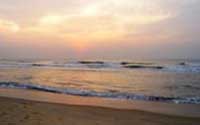
At 13 kms in length, Madras boasts the longest urban beach in India and the second largest stretch in the world. A promenade spanning 6 kms was built on the sandy Marina Beach in 1884 and the country’s first aquarium installed in 1909. It is fitting that first statue to be erected on the beach in 1959 was The Triumph of Labor; the four men braced to move a huge rock exemplify Chennai’s determined spirit. Sculpted by Debi Prasad Roy Chowdhry, many people feel that it resembles the photograph of World War II American Marines raising the flag on Iwo Jima.
Another notworthy statue beside the beach is a third statue – this one of Mahatma Gandhi, caught mid stride in his purposeful march to Dandi, to stop the making of salt – in protest at the salt tax imposed by the British. The two statues symbolically depict moral righteousness, revolt against tyranny and respect for labour – values deeply enshrined in the Tamil heart.
From April to October and again for a month from the middle of January to the middle of February, the rare and endangered Oliver Ridley turtles arrive to nest along the coast – one of the three homing grounds for the turtles, who lay their eggs in the hundreds and thousands before turning back to the sea.
Although the waters are unsafe to swim in due to turbulent undercurrents, the beach remains very popular with locals and visitors alike. People enjoy a walk on the golden sands with their families in the refreshing balmy breezes.
Santhome Cathedral
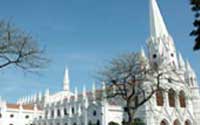
To the south of Marina Beach stands an imposing structure – the Santhome Cathedral, a Roman Catholic basilica. It was originally built by Portuguese explorers in the 16th century in homage to the Christian martyr St Thomas, apostle of Jesus, who preached his doctrine in India between AD 52 and AD 72 and whose tomb lies at the spot. Rebuilt in the Neo Gothic style by the British in 1893, the Cathedral is an important and beautiful landmark in the city of Chennai.
The Santhome basilica is believed to be one of the only three in the world to have been built over the tomb of an apostle – the others being St Peter’s in Rome and St. James in Santiago, Spain. Acting as the principal church of the Roman Catholic Archdiocese of the original city of Chennai and the extended area of Mylapore, it was raised to the status of Basiclica Minor in 1956 and declared a national shrine in 2006. This towering Cathedral is visited by Catholics from all over India.
Kapaleeshwar Temple
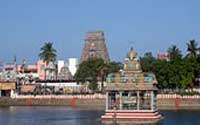
Legend speaks of a king of the region, who, while out hunting in the forests, chanced upon an amazing sight -wild peacocks were worshipping a lingam, symbol of the god Shiva with flowers, which they dropped onto the stone. He decided to build a temple dedicated to Shiva at the spot, installing the same lingam and naming the area, Mylapura, or “City of the Peacocks”, in honour of the birds.
A temple was built close to the sea by the Pallava kings in the 7th century AD in the Dravidian style of architecture, although, after the marauding Portuguese destroyed most of it in AD 1556, very little, besides some 12th century inscriptions remain of the old temple. The land around the modern temple has been reclaimed from sea and forest – and is now a busy residential and commercial locality. However, the main temple structure, later rebuilt by the Vijayanagar dynasty during the latter part of the 16th century and presently functional, incorporated what material could be recovered from the original temple. It stands commandingly over a large pond, its main gopuram or tower standing at 120 ft. and enclosing numerous shrines within. The main shrine is dedicated to the god Shiva or Kapaleeshwara. The Arubathimooval festival conducted by the temple, is considered its most significant event.
Fort St.George
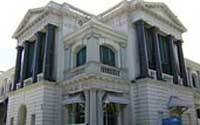
The 17th century saw the construction of Fort St George – in fact, it was to be the first British fortress in India and was completed in AD 1644. This further encouraged intensive settlements and trading increased exponentially. Seeking to secure its booming spice trade, the East India Company purchased land on the Coromandel Coast which was advantageous in terms of proximity to the Malaccan Straits. Here, they constructed a harbour, protected by a fort, which grew to be a settlement called George Town . George Town expanded to include nearby villages and thus was the modern and more extensive city of Madras born. The Fort, as it is known, currently houses the Tamil Nadu Legislative Assembly together with other official buildings.
The Fort, protected by its sturdy 6 metre high walls, now encloses the famous St. Mary’s Church and the Fort Museum. The museum attracts countless visitors who are awed by the symbols of power of the British Raj. Ironically, the ramparts hold the canons of Tipu Sultan, King of Mysore, who mounted a series of fierce wars of independence against the British. As surety that he would not attack them again Lord Cornwallis forced him to surrender his two young sons and there is a marble statue of Lord Cornwallis at the entrance, its pedestal bearing the tragic scene of the handing over of the young hostages.
St.Mary’s church
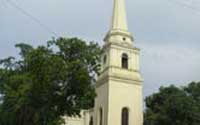
1678 and 1680 saw the construction of St Mary’s Church – which came to be known as the ‘Westminster Abbey of the East’. The tombstones in its graveyard mark the oldest deaths of Englishmen in India. Robert Clive, a mercenary and later a British officer who established the supremacy of the East India Company in Bengal was married in St Mary’s Church – as was the first benefactor of the prestigious Yale University in the USA, Governor Elihu Yale.
Kalakshetra
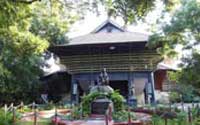
99 acres of beautiful, verdant grounds of the Kalakshetra, an asset of the institution since 1962, enclose an elite, unique world…where art is executed for art’s sake, far from the demands of the commercial world. It is the cultural nucleus of the minds and hearts of the people of Chennai. Under huge banyan trees, teachers, students and artists make special vows of dedication to the ancient traditions of Indian arts, crafts and especially to music and dance. Bharatanatyam is taught to eager students, research is conducted by reputed scholars of ancient culture and concerts are held for the initiated – as most of Chennai is. Gandharvaveda music and ancient notations and rhythms have been revived, taught and documented. The Kalakshetra’s handwoven sarees are prized as are the naturally dyed fabric in the Kalamkari style. Refinement and aesthetics are the byword of the Foundation – in dance, theatre, music and craft. This is their gift to Chennai and to the world.
The supremely talented Rukmini Devi Arundale founded the Academy in 1936, inviting students, distinguished teachers, musicians and artists to create their best in the Kalakshetra. It was she who designed the intricately stitched and folded Bharatanatyam costume which has become the signature and integral part of theatre and dance dramas. Under the collective umbrella of the Kalakshetra Foundation is the Rukmani Devi College of Fine Arts, the Besant Theosophical Higher Secondary School, a Craft Education and Research Centre which includes a Weaving Unit, the Arundale Senior Secondary School, the Visual Arts Centre, a natural dye Kalamkari unit and a printing and painting unit.
Our Top Tour Packages in South India
The four states that constitute South India are composed of distinctive geographic regions - narrow plains that fringe peninsular South India beside the Arabian Sea and the Bay of Bengal with two mountain ranges running alongside and the rocky hardtop of the Deccan and fertile central plains.
